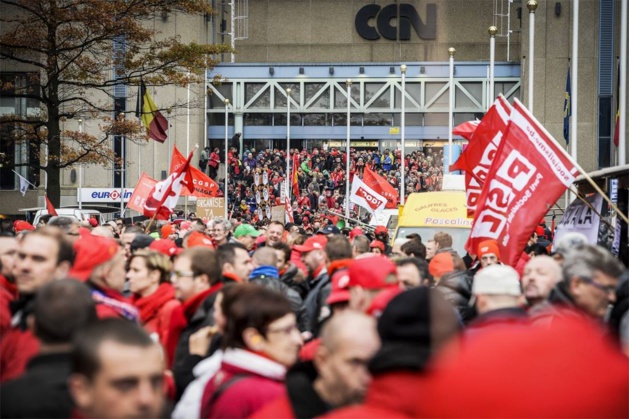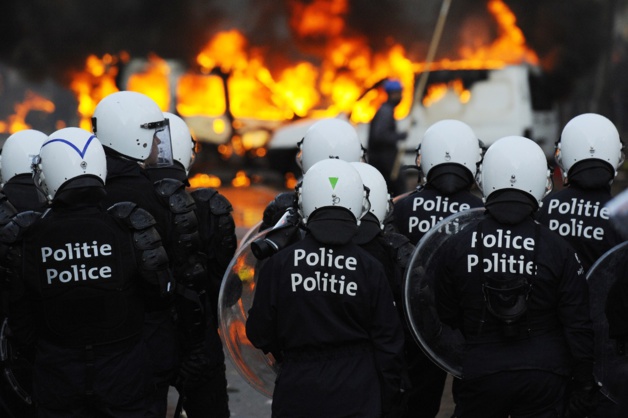Belgium is a federal state, of which executive power is wielded by the King and his ministers. Belgium is composed of Flemish, French and German communities that are spread over the Flemish and Walloon regions as well as over Brussels, the capital. The federal system is coupled with a constitutional and parliamentary monarchy. The King, a symbol of national unity, signs the laws of the Parliament, but he also plays a mediation role.
Recurrent political crises
Following the 2007 legislative elections, the country did not have a government for 194 days, and it was not until March 20th, 2008 that the country managed to form a government. The same problem occurred in 2010, but the situation was even worse : the crisis left the country without a government for 541 days . In both cases, the formation of the government was difficult, especially due to the obligation of forming coalitions.
The current federal government, in place since May 25th 2014, is composed of a Socialist Prime Minister and a right-wing parliamentary majority. These are the first legislative elections, since 2007, that have not induced a political crisis. But unfortunately a month after the elections, the Prime Minister had still not succeeded in forming a coalition. Thus the population feared for a new political crisis, which was finally avoided thanks to the appointment of a new Prime Minister, who was part of the Reformist Movement. But a new concern has arisen: the dissatisfaction of a part of the population concerning the measures of the government that are now mainly right-wing.
The biggest workers demonstration since 1986
In 1986, 200 000 people gathered in the streets of Brussels to demonstrate against austerity measures. On this Thursday November 6th, there were 100 000 people according to the police, but 120 000 according to the demonstrators. 30 years later, the reasons are still the same. The largest groups present were the trade unions, as well as the students and the feminist organizations. Among the most numerous were the General Federation of the Public Sector (CGSP) and the General Federation of Belgian Labour (FGTB).
Its union leader, Gilbert Lieben, explained the demonstrators’ demands to us: ‘We want the federal government to change its policy. Formed only a few weeks ago, it really has a right-wing program: the removal of index linking wages to the evolution of prices, the raising of the statutory retirement age from 65 to 67 years old, the decrease of the services to the public, the increase of consumption taxes...’ He maintained that most of these measures consist of a tightening of policies, which were announced during the election campaign.
For Fabien Houlmont, commissioner member at the CGSP, ‘a democracy extends beyond parliamentary democracy. […] An untroubled and harmonious society is built upon dialogue and consultation’. Thus he wants to ‘be sure that the Belgian government will consider more balanced measures, [especially] in terms of the financing of pensions and social security’. For him, it was the demonstration’s main demand.
In their testimonies, the two demonstrators explained to us that the government has tightened the basic proposals. Similarly, Mr. Houlmont wanted to highlight strongly the importance of social democracy. However, other people have disagreed. It is the case for Sylvain, a Reformist Movement militant, who declared to be against this demonstration ‘for several reasons: some claims made little sense, for example the policy of not replacing one out of five civil servants, which is a Walloon government measure, and I also find that demonstrators are not giving the new government a chance. […] I can understand that the Belgian Socialist Party (PS) is disappointed about not being part of the government anymore, but it is playing on people’s fear and it is not normal.’ He also put the number of demonstrators into perspective, as it does not even represent one percent of the Belgian population, by giving the example of the White March, which gathered more than 300 000 people 20 years ago.
The opposition stands its ground
For its part, the government declared that ‘the trade unions have no alternative: they want us to copy France, but this country is in an even worse situation’. This way it maintained that there are no alternatives to their policies, and that it will thus not respond to the claims made during the demonstration.
Mr. Denis Ducarme, deputy of the Reformist Movement (MR) in the Parliament, stated during an interview that the party only followed the government’ s guidelines. He affirmed that they were necessary measures in order to restore the country’s stability and to face the European Union’s pressure, and that it should not be surprising. In any case, he qualified his statement by saying that demonstrations against reforms, which did not please everybody, are normal, and that the ministry was ready to discuss with trade unions, as the use of consultation was a necessity during agreements with the government.
A violence weakening the credibility of claims
The broadcasted images showed the typical scenes of a conflict that had degenerated into a violent demonstration : lorries burning, water cannons, the police attempting to disperse the demonstrators using truncheons. There were 111 victims, 13 arrests and a man under arrest warrant. 11 vehicles were set on fire and 72 damaged.
Nevertheless, the people that had provoked this violence were not the demonstrators. Mr. Lieben maintained, ‘Unfortunately, the presence of some people, who were only looking for trouble or the consumption of alcohol for others, have led to unacceptable incidents’. Mr. Houlmont also explained that ‘it has been an ordeal for the police, who handled the demonstration, especially at the Brussels-South railway station (gare du Midi)… Facing such violence is particularly difficult and frustrating…’
It was interesting to see that opponents were saying the same things : like Sylvain, part of the Reformist Movement, maintained that, ’there are often rioters during demonstrations, so I am not particularly outraged that they were present this time. Destroying other people’s possessions and public goods is revolting, but it is not really the fault of the organizers.’ According to him, rioters should not be associated with demonstrators. Mr. Ducarme, for his part, explained to us that it was an ‘excessive minority, which caused violence. Some members of the government project a negative image onto the whole demonstration. There is anyway a really serious violence as 12 policemen were injured. But it would be completely ridiculous and narrow-minded to project these acts of violence onto the whole demonstration, whereas a majority of attendees only had a civic approach.‘
Several people have witnessed seeing ‘thugs’ insulting immigrants or people who look like immigrants during the demonstration. The most probable hypothesis is that these ‘thugs’ belong to extreme right-wing groups, and were here to weaken the credibility of the demonstration. Fabien Houlmont explained: ‘The extreme left-wing sometimes likes to have it out with the police, but never bullies immigrants. So I am almost sure that these madmen were right-wing extremists.’































